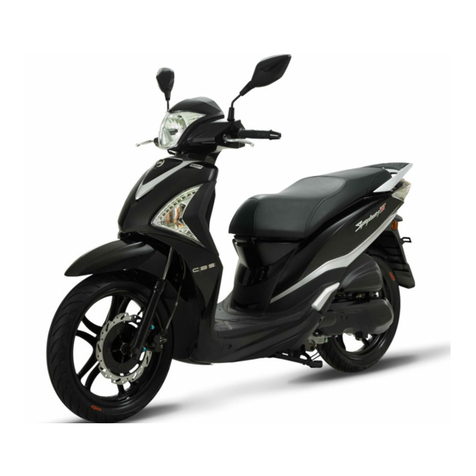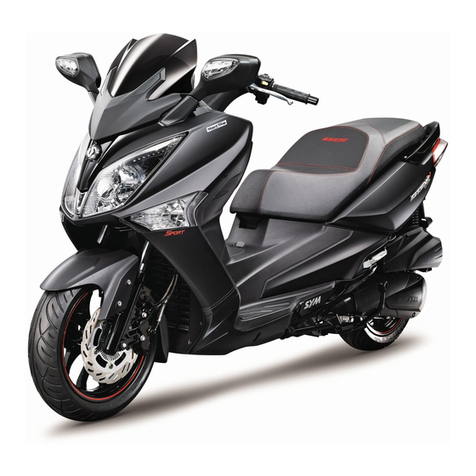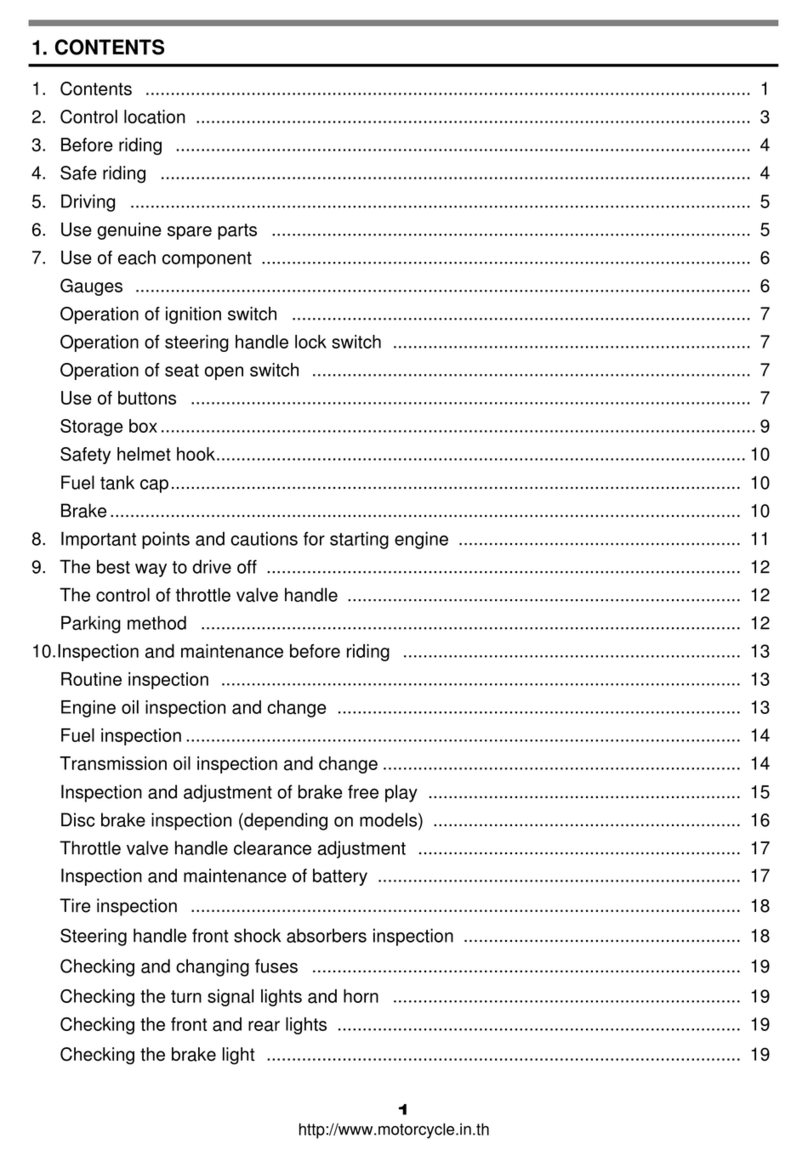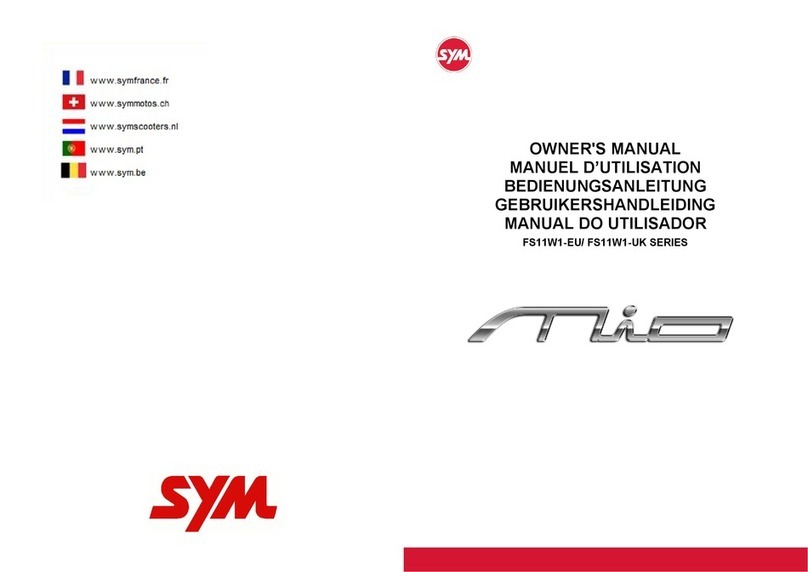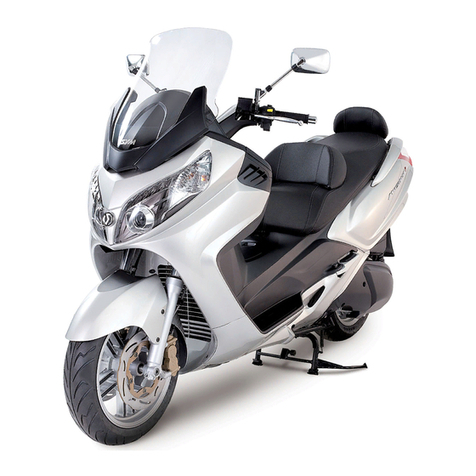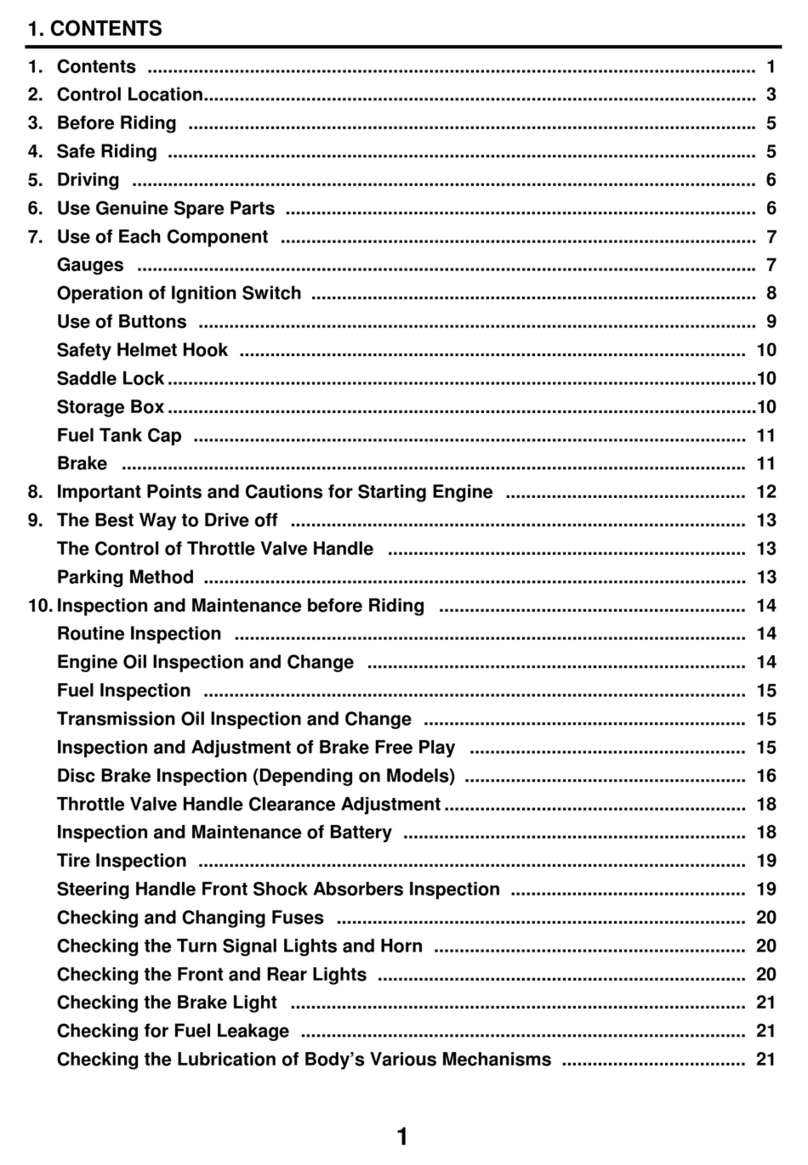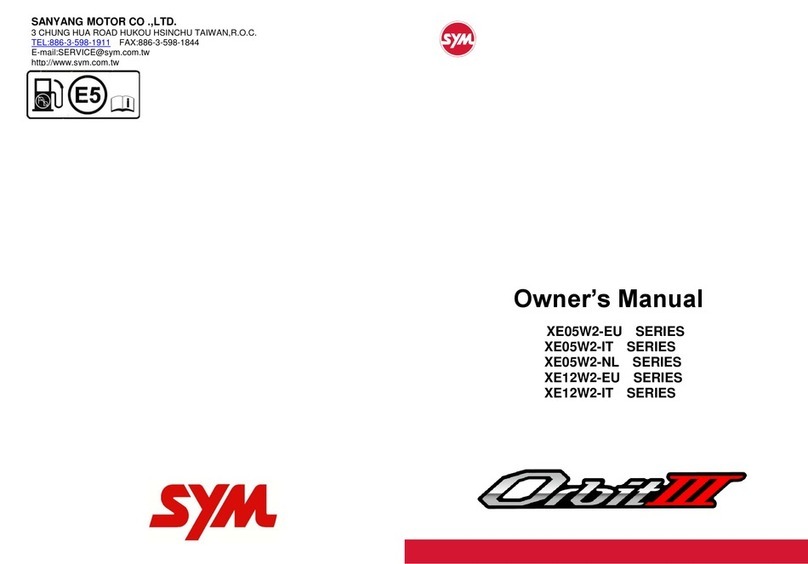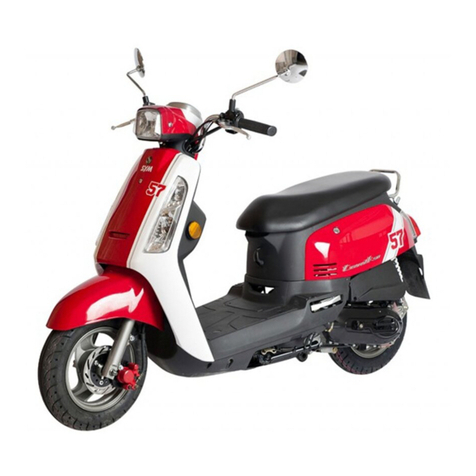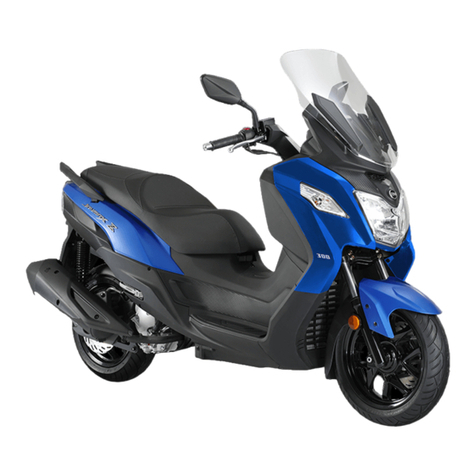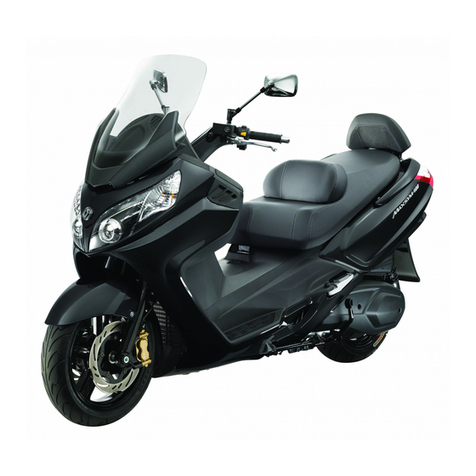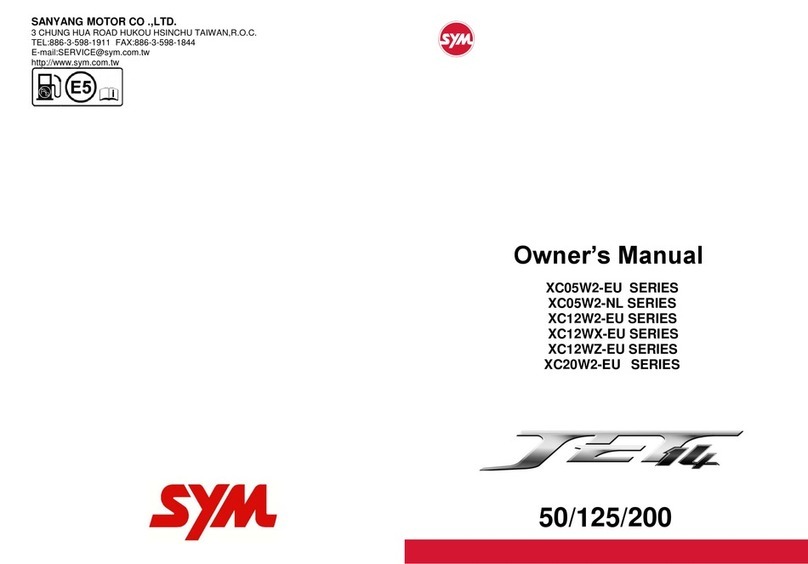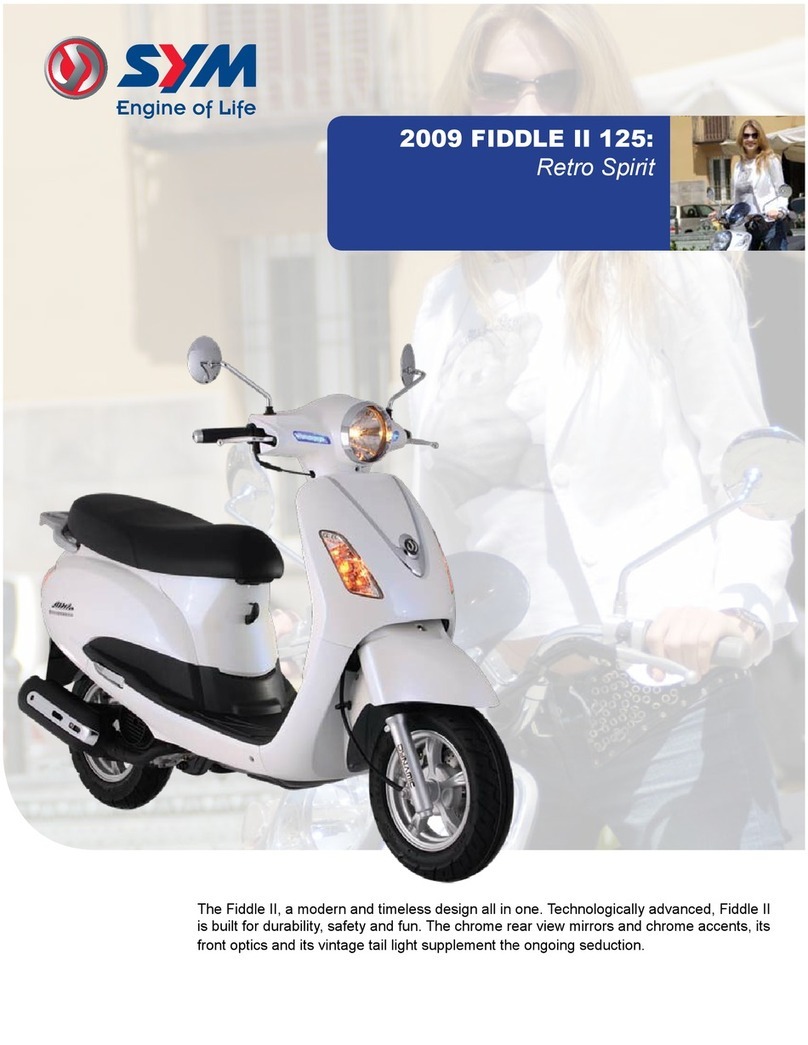
10
4. BEFORE RIDING
This manual describes the correct usage of this scooter including safety riding, simple inspection
methods and so on.
For a more comfortable and safety riding, please read this manual carefully.
yIn case the scooter’s specifications and construction are modified and different from the photos and
diagrams on the owner’s manual/catalogues, the specifications and construction of the actual
scooter shall prevail.
5. SAFE RIDING
It is very important to be relax and clothe properly when driving, observe traffic regulations, do not rush,
always drive carefully and relaxed.
Usually, most people would ride their newly bought scooter very carefully, but after they became familiar
with their scooter, they tended to become reckless which may result in an accident.
Thank you very much for choosing a SANYANG scooter:
yIn order to maximize your scooter’s performance, a periodic inspections and regular
maintenance should be performed. We recommend that after riding your new scooter for the
first 300 kilometers that you take your scooter to an Authorized SANYANG scooter dealer for an
inspection. Thereafter, we recommend that you take your scooter to an Authorized SANYANG
scooter dealer for an inspection every 1000 kilometers.
CAUTION:
yDo not modify your scooter! Modifying the scooter will void the warranty. Modifying the scooter
may be illegal. Modification will affect the performance of the scooter. Engine modification
could cause poor engine performance, engine damage, excessive exhaust noise, and could
shorten the life of the scooter.
To remind you:
yAlways wear your safety helmet when riding your scooter. Use care to properly tighten the chin
strap.
yWear close fitting clothes. Open or loose clothing may be blown by the wind and cause clothing
to get caught on the steering handle or other scooter parts and could affect riding safety.
yHold the steering handle with both hands when riding. Never ride with only one hand.
yAlways observe the speed limit.
WARNING!!
yWhile riding, the exhaust muffler is extremely hot. A passenger must use care and place his/her
feet on the foot pegs to avoid being burned by the exhaust muffler.
yAfter riding, the exhaust muffler is extremely hot. Be careful not to get burned when conducting
an inspection or maintenance.
yAfter riding, the exhaust muffler is extremely hot. Select a suitable location to park your scooter
to help others avoid getting burned by the exhaust muffler.
